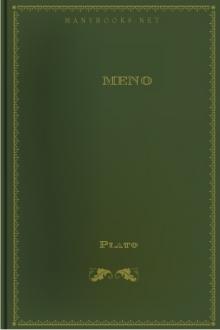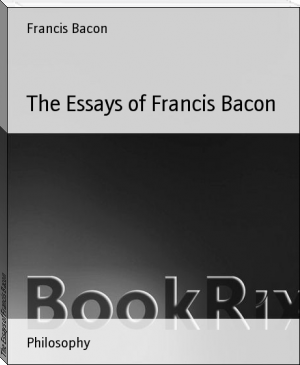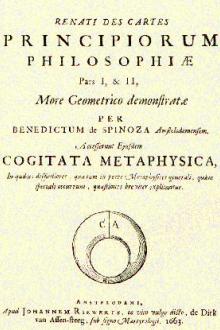The Kama Sutra of Vatsayayana by Sir Richard Francis Burton (phonics readers .txt) 📖

- Author: Sir Richard Francis Burton
- Performer: 1419168118
Book online «The Kama Sutra of Vatsayayana by Sir Richard Francis Burton (phonics readers .txt) 📖». Author Sir Richard Francis Burton
One work in the English language is somewhat similar to these works of the Hindoos. It is called ‘Kalogynomia: or the Laws of Female Beauty’, being the elementary principles of that science, by T. Bell, M.D., with twenty-four plates, and printed in London in 1821. It treats of Beauty, of Love, of Sexual Intercourse, of the Laws regulating that Intercourse, of Monogamy and Polygamy, of Prostitution, of Infidelity, ending with a catalogue raisonn�e of the defects of female beauty.
Other works in English also enter into great details of private and domestic life: The Elements of Social Science, or Physical, Sexual and Natural Religion, by a Doctor of Medicine, London, 1880, and Every Woman’s Book, by Dr Waters, 1826. To persons interested in the above subjects these works will be found to contain such details as have been seldom before published, and which ought to be thoroughly understood by all philanthropists and benefactors of society.
After a perusal of the Hindoo work, and of the English books above mentioned, the reader will understand the subject, at all events from a materialistic, realistic and practical point of view. If all science is founded more or less on a stratum of facts, there can be no harm in making known to mankind generally certain matters intimately connected with their private, domestic, and social life.
Alas! complete ignorance of them has unfortunately wrecked many a man and many a woman, while a little knowledge of a subject generally ignored by the masses would have enabled numbers of people to have understood many things which they believed to be quite incomprehensible, or which were not thought worthy of their consideration.
INTRODUCTIONIT may be interesting to some persons to learn how it came about that Vatsyayana was first brought to light and translated into the English language. It happened thus. While translating with the pundits the ‘Anunga Runga, or the stage of love’, reference was frequently found to be made to one Vatsya. The sage Vatsya was of this opinion, or of that opinion. The sage Vatsya said this, and so on. Naturally questions were asked who the sage was, and the pundits replied that Vatsya was the author of the standard work on love in Sanscrit literature, that no Sanscrit library was complete without his work, and that it was most difficult now to obtain in its entire state. The copy of the manuscript obtained in Bombay was defective, and so the pundits wrote to Benares, Calcutta and Jeypoor for copies of the manuscript from Sanscrit libraries in those places. Copies having been obtained, they were then compared with each other, and with the aid of a Commentary called ‘Jayamangla’ a revised copy of the entire manuscript was prepared, and from this copy the English translation was made. The following is the certificate of the chief pundit:
‘The accompanying manuscript is corrected by me after comparing four different copies of the work. I had the assistance of a Commentary called “Jayamangla” for correcting the portion in the first five parts, but found great difficulty in correcting the remaining portion, because, with the exception of one copy thereof which was tolerably correct, all the other copies I had were far too incorrect. However, I took that portion as correct in which the majority of the copies agreed with each other.’
The ‘Aphorisms on Love’ by Vatsyayana contain about one thousand two hundred and fifty slokas or verses, and are divided into parts, parts into chapters, and chapters into paragraphs. The whole consists of seven parts, thirty-six chapters, and sixty-four paragraphs. Hardly anything is known about the author. His real name is supposed to be Mallinaga or Mrillana, Vatsyayana being his family name. At the close of the work this is what he writes about himself:
‘After reading and considering the works of Babhravya and other ancient authors, and thinking over the meaning of the rules given by them, this treatise was composed, according to the precepts of the Holy Writ, for the benefit of the world, by Vatsyayana, while leading the life of a religious student at Benares, and wholly engaged in the contemplation of the Deity. This work is not to be used merely as an instrument for satisfying our desires. A person acquainted with the true principles of this science, who preserves his Dharma (virtue or religious merit), his Artha (worldly wealth) and his Kama (pleasure or sensual gratification), and who has regard to the customs of the people, is sure to obtain the mastery over his senses. In short, an intelligent and knowing person attending to Dharma and Artha and also to Kama, without becoming the slave of his passions, will obtain success in everything that he may do.’
It is impossible to fix the exact date either of the life of Vatsyayana or of his work. It is supposed that he must have lived between the first and sixth century of the Christian era, on the following grounds. He mentions that Satakarni Satavahana, a king of Kuntal, killed Malayevati his wife with an instrument called kartari by striking her in the passion of love, and Vatsya quotes this case to warn people of the danger arising from some old customs of striking women when under the influence of this passion. Now this king of Kuntal is believed to have lived and reigned during the first century A.D., and consequently Vatsya must have lived after him. On the other hand, Virahamihira, in the eighteenth chapter of his ‘Brihatsanhita’, treats of the science of love, and appears to have borrowed largely from Vatsyayana on the subject. Now Virahamihira is said to have lived during the sixth century A.D., and as Vatsya must have written his works previously, therefore not earlier than the first century A.D., and not later than the sixth century A.D., must be considered as the approximate date of his existence.
On the text of the ‘Aphorisms on Love’, by Vatsyayana, only two commentaries have been found. One called ‘Jayamangla’ or ‘Sutrabashya’, and the other ‘Sutra vritti’. The date of the ‘Jayamangla’ is fixed between the tenth and thirteenth century A.D., because while treating of the sixty-four arts an example is taken from the ‘Kavyaprakasha’ which was written about the tenth century A.D. Again, the copy of the commentary procured was evidently a transcript of a manuscript which once had a place in the library of a Chaulukyan king named Vishaladeva, a fact elicited from the following sentence at the end of it.
‘Here ends the part relating to the art of love in the commentary on the “Vatsyayana Kama Sutra”, a copy from the library of the king of kings, Vishaladeva, who was a powerful hero, as it were a second Arjuna, and head jewel of the Chaulukya family.’
Now it is well known that this king ruled in Guzerat from 1244 to 1262 A.D., and founded a city called Visalnagur. The date, therefore, of the commentary is taken to be not earlier than the tenth and not later than the thirteenth century. The author of it is supposed to be one Yashodhara, the name given him by his preceptor being Indrapada. He seems to have written it during the time of affliction caused by his separation from a clever and shrewd woman, at least that is what lie himself says at the end of each chapter. It is presumed that he called his work after the name of his absent mistress, or the word may have some connection with the meaning of her name.
This commentary was most useful in explaining the true meaning of Vatsyayana, for the commentator appears to have had a considerable knowledge of the times of the older author, and gives in some places very minute information. This cannot be said of the other commentary, called ‘Sutra vritti’, which was written about A.D. 1789, by Narsing Shastri, a pupil of a Sarveshwar Shastri; the latter was a descendant of Bhaskur, and so also was our author, for at the conclusion of every part he calls himself Bhaskur Narsing Shastri. He was induced to write the work by order of the learned Raja Vrijalala, while he was residing in Benares, but as to the merits of this commentary it does not deserve much commendation. In many cases the writer does not appear to have understood the meaning of the original author, and has changed the text in many places to fit in with his own explanations.
A complete translation of the original work now follows. It has been prepared in complete accordance with the text of the manuscript, and is given, without further comments, as made from it.
Salutation to Dharma, Artha and Kama
IN the beginning, the Lord of Beings created men and women, and in the form of commandments in one hundred thousand chapters laid down rules for regulating their existence with regard to Dharma, 1 Artha, 2 and Kama. 3 Some of these commandments, namely those which treated of Dharma, were separately written by Swayambhu Manu; those that related to Artha were compiled by Brihaspati; and those that referred to Kama were expounded by Nandi, the follower of Mahadeva, in one thousand chapters.
Now these ‘Kama Sutra’ (Aphorisms on Love), written by Nandi in one thousand chapters, were reproduced by Shvetaketu, the son of Uddvalaka, in an abbreviated form in five hundred chapters, and this work was again similarly reproduced in an abridged form, in one hundred and fifty chapters, by Babhravya, an inheritant of the Punchala (South of Delhi) country. These one hundred and fifty chapters were then put together under seven heads or parts named severally
Sadharana (general topics)
Samprayogika (embraces, etc.)
Kanya Samprayuktaka (union of males and females)
Bharyadhikarika (on one’s own wife)
Paradika (on the wives of other people)
Vaisika (on courtesans)
Aupamishadika (on the arts of seduction, tonic medicines, etc.)
The sixth part of this last work was separately expounded by Dattaka at the request of the public women of Pataliputra (Patna), and in the same way Charayana explained the first part of it. The remaining parts, viz. the second, third, fourth, fifth, and seventh, were each separately expounded by
Suvarnanabha (second part)
Ghotakamukha (third part)
Gonardiya (fourth part)
Gonikaputra (fifth part)
Kuchumara (seventh part), respectively.
Thus the work being written in parts by different authors was almost unobtainable and, as the parts which were expounded by Dattaka and the others treated only of the particular branches of the subject to which each part related, and moreover as the original work of Babhravya was difficult to be mastered on account of its length, Vatsyayana, therefore, composed his work in a small volume as an abstract of the whole of the works of the above named authors.
Observations on the three worldly attainments of Virtue, Wealth, and Love
On the study of the Sixty-four Arts
On the Arrangements of a House, and Household Furniture; and about the Daily Life of a Citizen, his Companions, Amusements, etc.
About classes of Women fit and unfit for Congress with the Citizen, and of Friends, and Messengers
Kinds of Union according to Dimensions, Force of Desire, and Time; and on the different kinds of Love
Of the Embrace
On Kissing
On Pressing or Marking with the Nails
On Biting, and the ways of Love to be employed with regard to Women of different countries
On the various ways of Lying down, and the different kinds of Congress
On the various ways of Striking, and of the Sounds appropriate to them
About females acting the part of Males
On holding the Lingam in the Mouth
How to begin and how to end the Congress. Different kinds





Comments (0)